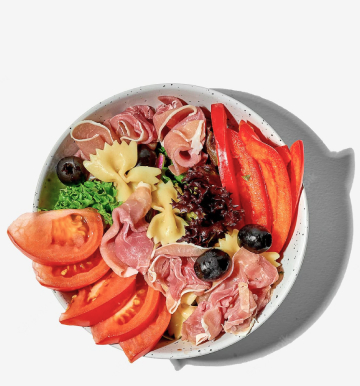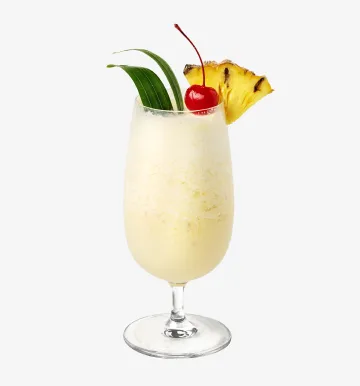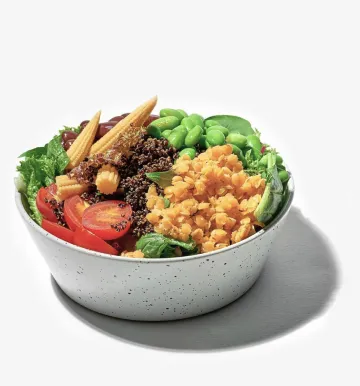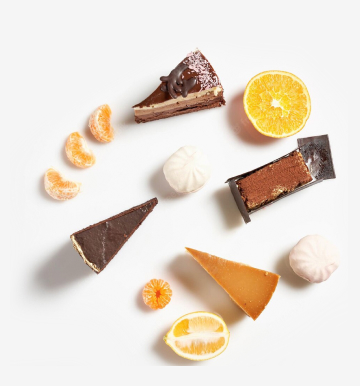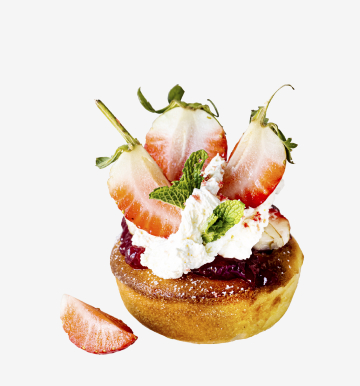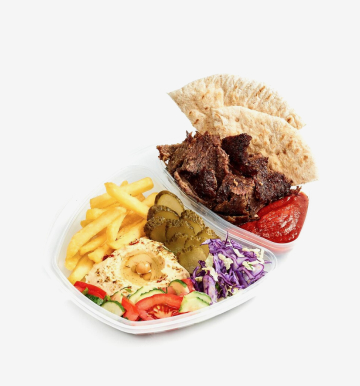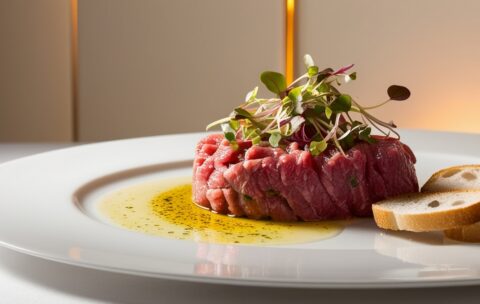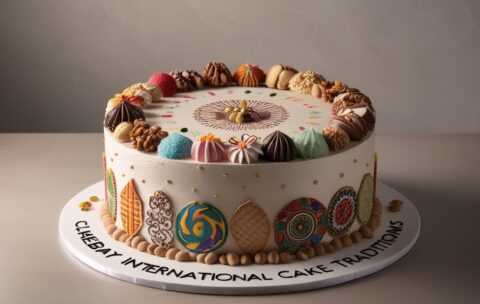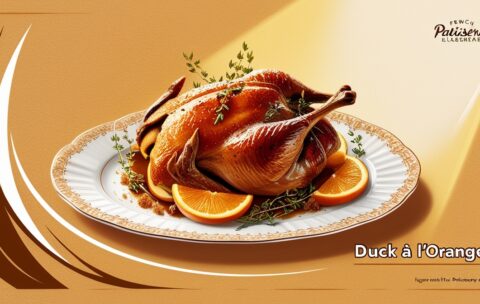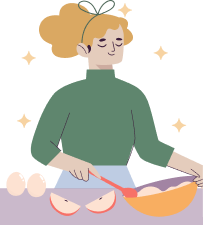Home Update 02
October 4, 2023 2025-06-05 13:04Home Update 02
Become a Home Chef
Learn to cook from scratch and master restaurant-quality meals in your own kitchen. Perfect for beginners and food lovers.

Our Top Courses
We've selected the best programs to get you started. Each course offers step-by-step lessons, hands-on recipes, and guaranteed results — even for beginners.
Tandoori Chicken
3 Lessons
56 minutes
Intermediate
What you'll learn
How to prepare and blend a traditional tandoori marinade (yogurt, spices, ginger, garlic).
Techniques for scoring and marinating chicken for maximum flavor absorption.
Substituting or simulating a tandoor oven using a home oven, grill, or stovetop.
Controlling heat and timing to achieve a juicy interior and lightly charred exterior.
Creating a simple mint-cilantro chutney or yogurt raita to accompany the chicken.
Plating and garnishing for authentic presentation (lemon wedges, sliced onions, coriander).
Decadent Cheesecakes: From No-Bake to Baked
3 Lessons
1.3 hour
Intermediate
What you'll learn
No-Bake Cheesecake Fundamentals
How to prepare a sturdy, crisp graham cracker (or digestive cookie) crust without baking
Proper gelatin blooming and incorporation techniques for a stable filling
Folding methods to achieve a light, airy texture without deflating whipped cream
Creative topping ideas: fruit compotes, chocolate ganache, caramel drizzle
Baked Cheesecake Mastery
Techniques for preventing cracks: water bath assembly, gentle mixing, and controlled cooling
How to achieve an ultra-creamy, custardy center by managing oven temperature and bake time
Making and baking a fail-proof graham/digestive cookie crust
Flavor variations: lemon zest infusion, pumpkin swirl, poppy seed blends, and espresso accents
Decoration & Presentation
Piping whipped cream rosettes around the rim with a star tip
Arranging fresh fruit in radial patterns and glazing for shine
Adding textured accents: nut crumbles, chocolate shavings, and edible flowers
Troubleshooting & Tips
Solutions for common issues: cracked tops, dense centers, runny fillings, and weeping
Ingredient substitutions (e.g., gluten-free crust options, non-dairy alternatives)
How to scale recipes up or down for 6-inch mini cheesecakes, pie-sized “cheesecake tarts,” or 10-inch party-size
Ramen Tonkotsu
4 Lessons
2.3 hours
Intermediate
What you'll learn
How to blanch and simmer pork bones and fat over high heat to achieve a milky, emulsified Tonkotsu broth.
Techniques for preparing and seasoning tare (flavor base) to complement the broth’s richness.
Methods for cooking or making alkaline-style ramen noodles to the correct chew (koshi).
Preparation of classic toppings: chashu pork (rolled braised pork belly), ajitsuke tamago (marinated soft-boiled egg), menma (seasoned bamboo shoots), and negi (green onions).
Balancing and assembling each component—broth, tare, noodles, and toppings—so the final bowl is harmonious in texture, aroma, and flavor.
Caramelized Banana
2 Lessons
2.4 hours
Intermediate
What you'll learn
Banana Selection & Ripeness
How to choose bananas at the peak of sweetness and proper firmness for caramelizing.
Recognizing visual and tactile cues that indicate ideal ripeness.
Caramel Sauce Preparation
Techniques for melting and browning sugar without burning—achieving a smooth, amber-hued caramel.
Balancing sweetness and depth by adjusting cook time and adding flavor enhancers like vanilla or citrus.
Cooking & Coating Bananas
Proper slicing methods to ensure even cooking.
Timing the addition of butter and bananas so the fruit softens without turning mushy.
Tips for gently tossing banana slices in hot caramel to create uniform coating.
Serving & Pairing Ideas
Creative ways to plate caramelized bananas as a standalone dessert or as a component (pancakes, waffles, yogurt, ice cream).
Garnish suggestions—nuts, herbs, spice dustings—to add texture and color contrast.
Storage and make-ahead strategies to preserve caramel’s texture and banana integrity.
Piña Colada
5 Lessons
1.6 hour
Intermediate
What you'll learn
Historical Roots & Evolution: Explore how the Piña Colada emerged in Puerto Rico’s bars during the 1950s, and how it became the island’s official drink.
Ingredient Selection: Discover why cream of coconut (e.g., Coco López) is preferred over plain coconut milk, and how choosing fresh versus canned pineapple juice affects flavor.
Blending Techniques: Learn the proper blender speed and ice ratio to achieve a silky-smooth texture without over-diluting.
Presentation & Garnishing: Master professional garnishing methods—how to cut a pineapple wedge, position a maraschino cherry, and optional sugar-rim techniques—to create an Instagram-worthy pour.
Variation & Customization: Experiment with different rums (e.g., aged vs. silver), add fruit purees (strawberry, mango), or create a “Virgin Piña Colada” by omitting alcohol.
Tasting & Pairing: Understand how to balance sweetness and acidity, and which snacks or light bites (e.g., coconut-lime shrimp) complement this creamy tropical drink.
Fattoush
5 Lessons
1.3 hour
Intermediate
What you'll learn
How to select and prepare a variety of crisp lettuces and vegetables.
Techniques for toasting or frying pita to achieve perfect crunch.
Crafting a signature sumac–lemon vinaigrette for authentic flavor.
Balancing textures: integrating greens, veggies & pita chips.
Creative add-ins: from pomegranate to za’atar for seasonal twists.
Presentation tips to serve fattoush attractively as part of a mezze spread.
Troubleshooting & Refinement Workshop
4 Lessons
2.9 hours
Intermediate
What you'll learn
Identifying Baking Flaws
Recognize symptoms: wet centers, domed tops, tunneling.
Distinguish oven, ingredient, and mixing–related causes.
Adjusting Recipes & Techniques
Modify ratios for moisture balance and crumb structure.
Tweak mixing times to avoid over- or undermixing.
Oven Calibration & Bake Environment
Test for hot spots with simple cake tester method.
Optimize rack placement and temperature adjustments.
Emergency Fixes During Baking
Rescue sinking cakes mid-bake with tented foil or reduced heat.
Correct cracked tops by adjusting cooling and humidity.
Refinement Practices
Use test batches to fine-tune recipes.
Record observations and standardize best practices.
Mastering Chocolate Cakes
4 Lessons
1.4 hour
Intermediate
What you'll learn
Ingredient Essentials
Understanding Dutch-process vs. natural cocoa
Choosing between all-purpose, cake, and bread flour
Role of oil vs. butter for moisture
Batter Techniques
Creaming method for light layers
One-bowl “melted-chocolate” method for dense cakes
Whipping egg whites for chiffon-style chocolate cake
Baking & Structure
Oven temperature calibration and its impact on rise
Tips for level cakes: pan prep, baking strips, and testing doneness
Troubleshooting: sunken centers, gummy crumbs, uneven tops
Fillings & Frostings
Crafting silky chocolate ganache (TABLE BELOW)
Whipped chocolate buttercream vs. Swiss meringue buttercream
Simple whipped cream and mousse fillings
Decoration & Assembly
Stack and level layers with a cake comb and turntable
Smooth crumb coat, final coat, and ganache drip techniques
Simple piping (star tips) and fresh-fruit accents
Frosting Type Key Ingredients Best Use Case
Chocolate Ganache Equal parts dark chocolate & cream Drip cakes, glossy finishes
Swiss Meringue Buttercream Egg whites, sugar, butter, cocoa Stable layer cakes, rosettes
Whipped Chocolate Buttercream Butter, cocoa powder, powdered sugar, milk Light filling, quick spreads
Chocolate Fondant
3 Lessons
1 hour
Intermediate
What you'll learn
Ingredient Selection & Preparation: How to choose high-quality chocolate, cocoa powder, and eggs; correctly measure and prepare ingredients for optimal texture.
Temperature Management: Techniques for melting chocolate and butter to avoid seizing or burning, including bain-marie and microwave methods.
Batter Consistency: How to achieve the right balance between a custard-like batter and a stable cake structure so that the exterior sets while the interior remains molten.
Molding & Baking: Proper greasing, flouring, or buttering of molds; timing and oven temperature adjustments to guarantee a uniform rise without overcooking.
Plating & Presentation: Tips for unmolding the fondant cleanly, garnishing ideas (e.g., dusted cocoa, fresh berries, ice cream pairing), and creating an elegant plating design.
Troubleshooting Common Issues: Solutions for common pitfalls—such as undercooked centers that are too runny, overbaked cakes with no molten core, or cracked exteriors.
Caprese Salad
6 Lessons
2.3 hours
Intermediate
What you'll learn
How to select perfectly ripe tomatoes and fresh mozzarella
Techniques for uniform slicing and layering
Balancing flavors with olive oil, balsamic vinegar, salt, and pepper
Creative garnishes and presentation ideas
Tips for make-ahead prep without sacrificing freshness
Choose Your Category
Our courses are grouped by category to help you find what suits your taste. From quick dinners to gourmet desserts — start with what inspires you.



About Our Culinary Journey
We are passionate about bringing the joy of cooking to everyone. Our mission is to empower food lovers with the skills and confidence to create delicious meals at home. With expert chefs, innovative teaching methods, and a love for culinary arts, we’re here to inspire your kitchen adventures.
Our Commitment
Everyone can cook well. Our courses offer clear guidance to ensure success for all skill levels.
Community Focus
Join our foodie community. Share creations and grow in a supportive environment.
Why Choose Our Culinary Courses?
Our courses are designed to make cooking fun, accessible, and inspiring. Whether you're a beginner or a seasoned cook, our unique features will help you elevate your skills and unleash your culinary creativity.

Expert Instructors
Learn from world-class chefs with years of experience. Our instructors guide you step-by-step, sharing professional tips.
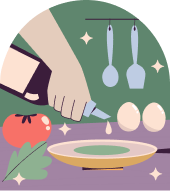
Flexible Learning
Study at your own pace, anytime, anywhere. Our online platform offers 24/7 access to lessons, so you can fit cooking into your busy schedule.

Hands-On Recipes
Practice with real recipes designed for all skill levels. From classic dishes to modern creations, you’ll master meals that impress every time.
What Our
Students Say
Hear from our happy students who have transformed their cooking skills with our courses. From beginners to seasoned cooks, our community loves sharing their success stories!
"This course completely changed how I cook! The instructors are so knowledgeable, and the lessons are easy to follow. I’m now confident making dishes I never thought I could."
Emma Johnson
"I love the flexibility of these courses. I can learn at my own pace and still feel supported. The recipes are amazing, and I’ve impressed my family with new dishes!"
Michael Chen
"The vegan cooking course was a game-changer for me. I learned so many creative ways to make plant-based meals that taste incredible. Highly recommend!"
Sophie Martinez
"The hands-on approach made learning so fun! I went from burning toast to baking artisan bread in weeks. Thank you for such an inspiring experience!"
James Carter
Discover Our Newest Culinary Courses
Get inspired by our latest additions! These exciting courses bring fresh ideas and techniques to your kitchen, perfect for food lovers eager to try something new. Browse our carousel to find your next culinary adventure.
Wagyu Beef Tartare with Truffle Oil
2 Lessons
58 minutes
Intermediate
What you'll learn
How to identify and source authentic Wagyu beef suitable for tartare
Proper techniques for trimming, dicing, and handling raw beef for safety and texture
Seasoning strategies that highlight Wagyu’s rich marbling without overpowering it
How to incorporate truffle oil (or alternative truffle components) for depth of flavor
Tips for balancing acidity, fat, and aromatics in a classic tartare base (mustard, capers, herbs, etc.)
Step-by-step instructions for elegant plating and finishing touches (microgreens, egg yolk, crispy brioche)
Food-safety best practices when serving raw beef to guests
Thai Mango & Green Papaya Salad
4 Lessons
2.4 hours
Intermediate
What you'll learn
Ingredient Prep: How to julienne mango and shred green papaya for optimal texture.
Dressing Mastery: Whisking the classic Thai dressing with fish sauce (or vegan substitute), lime, palm sugar, and chilies.
Texture & Balance: Layering crunchy peanuts, toasted coconut flakes, and fresh Thai basil or cilantro.
Spice Control: Adjusting heat levels with fresh bird’s-eye chilies, chili flakes, or chili paste.
Plating & Garnish: Presenting vibrant colors and garnishes—flower petals, lime wheels, and herb sprigs.
Chocolate Mousse
5 Lessons
2.6 hours
Intermediate
What you'll learn
How to select the right chocolate type for mousse (dark, milk, or white)
Techniques for achieving light, airy texture without deflating
How to temper chocolate for maximum flavor and smoothness
Tips for folding ingredients like a pro
Creative plating and garnishing ideas (berries, mint, edible flowers)
Storage methods to keep mousse fresh and fluffy
Berry Gradient Ice Cream
3 Lessons
2.4 hours
Intermediate
What you'll learn
How to prepare and strain fresh berry purees for a smooth texture
Techniques for building distinct, colorful layers without mixing
Tips on freezing timing between layers for clean separation
How to balance sweet, tart, and creamy flavors across layers
Proper slicing and serving methods to highlight the gradient
Creative ways to present and garnish layered frozen desserts
Mojito
3 Lessons
2.3 hours
Intermediate
What you'll learn
How to properly muddle mint and sugar to release essential oils without bruising the leaves.
The ideal ratio of white rum, fresh lime juice, and simple syrup for a perfectly balanced drink.
Techniques for layering ingredients and adding soda water to preserve carbonation.
Tips for selecting the freshest mint varieties and hand-rolling or tearing leaves.
Methods to crush ice at home for that classic “frosty” Mojito texture.
Variations on the traditional recipe, including flavored syrups or fruit additions.
Osso Buco
2 Lessons
1.3 hour
Intermediate
What you'll learn
How to choose the right cut (veal or beef shank) and prepare it for braising.
Techniques for browning meat and aromatics to develop a flavorful base.
Proper use of white wine and tomato elements to achieve a balanced sauce.
Heat control and timing to ensure the shank becomes fork-tender without drying out.
Preparation of gremolata (lemon zest, garlic, parsley) to top the dish with bright freshness.
Panzanella Salad
5 Lessons
3.6 hours
Intermediate
What you'll learn
How to choose and prep day-old bread for optimal texture
Techniques for toasting or pan-frying bread cubes so they stay crisp yet absorb dressing
Selecting and handling peak-season tomatoes and cucumbers for maximum juiciness
Crafting a harmonious vinaigrette of olive oil, vinegar, garlic, and seasonings
Layering ingredients and timing the rest period to meld flavors without sogginess
International Cake Traditions
5 Lessons
2.9 hours
Intermediate
What you'll learn
How to prepare and bake at least five signature cakes from different countries, using authentic ingredients and methods
The cultural and historical significance of each cake: when and why it’s traditionally served
Variations on flavorings and decorations that make each region’s version unique
Techniques for achieving proper texture, moisture, and flavor balance in international recipes
Tips for adapting ingredients when certain items are not readily available in your area
Presentation ideas to honor traditional styles (for example, Panettone’s distinctive domed shape or a Japanese wagashi’s intricate design)
Duck à l’Orange
2 Lessons
2.6 hours
Intermediate
What you'll learn
How to properly score and season duck breast (or prepare a whole duck) for even fat rendering and a crisp exterior.
Techniques for searing and roasting duck to medium-rare (internal temperature ~135 °F/57 °C) while maintaining juicy meat.
Fundamental steps for making an orange reduction: zesting, juicing, and balancing sweetness, acidity, and depth with stock and aromatics.
Methods for deglazing the pan and incorporating pan drippings into the sauce for added umami.
Strategies for finishing the sauce (mounting with butter, straining) so it coats the duck without becoming cloying.
Plating suggestions: slicing the breast, spooning sauce without drowning, and garnishing with orange segments or microgreens.
Decadent Cheesecakes: From No-Bake to Baked
3 Lessons
1.3 hour
Intermediate
What you'll learn
No-Bake Cheesecake Fundamentals
How to prepare a sturdy, crisp graham cracker (or digestive cookie) crust without baking
Proper gelatin blooming and incorporation techniques for a stable filling
Folding methods to achieve a light, airy texture without deflating whipped cream
Creative topping ideas: fruit compotes, chocolate ganache, caramel drizzle
Baked Cheesecake Mastery
Techniques for preventing cracks: water bath assembly, gentle mixing, and controlled cooling
How to achieve an ultra-creamy, custardy center by managing oven temperature and bake time
Making and baking a fail-proof graham/digestive cookie crust
Flavor variations: lemon zest infusion, pumpkin swirl, poppy seed blends, and espresso accents
Decoration & Presentation
Piping whipped cream rosettes around the rim with a star tip
Arranging fresh fruit in radial patterns and glazing for shine
Adding textured accents: nut crumbles, chocolate shavings, and edible flowers
Troubleshooting & Tips
Solutions for common issues: cracked tops, dense centers, runny fillings, and weeping
Ingredient substitutions (e.g., gluten-free crust options, non-dairy alternatives)
How to scale recipes up or down for 6-inch mini cheesecakes, pie-sized “cheesecake tarts,” or 10-inch party-size











